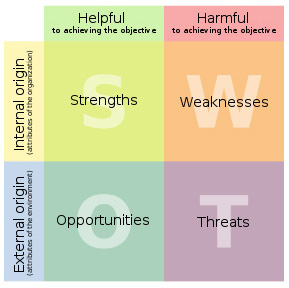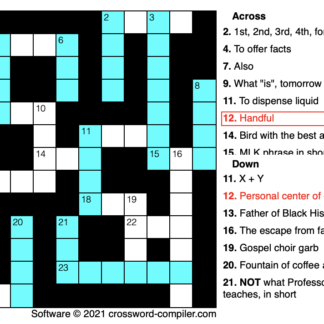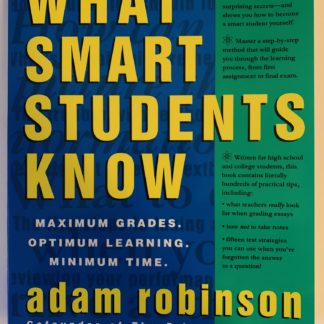
When I worked in the education policy space, there were several researchers who stood out because of their work on access and equity. Among them was Anthony Carnevale, now Professor of Policy at Georgetown and the Director of their Center on Education and the Workforce. Back then, his research focused on standardized testing and how it should recognize the context within which students learn.
At Georgetown, he continues to be a powerful force on the side of equity. Not many have the breadth of perspectives on how students get to college and the prospects for success afterwards. Thus, for the parents who are approaching educational planning strategically, the recent interview I had with Dr. Carnevale had a lot to offer. We talked about strategic “opportunities and threats.”
Our conversation began with Tony (as he prefers to be called) talking about how The Center on Education and the Workforce came into being. “Foundations asked me what they should do with the money they were holding on to—I told them to give to me”. His pitch worked because back then, in the early eighties, he recognized pivotal changes in the labor market. “Jobs that used to only require a high school degree had vanished. Now 70 percent of the good jobs required a bachelor’s degree or more.” Tony explained. He also tied his observations to a report that was as important to the education policy community that the Kerner Commission report was to the civil rights community. A Nation at Risk, released to the world in 1983, documented in stark detail the failures of the nation’s education system from kindergarten through college.
In more modern times, Tony has been behind more than 80 reports that look at various aspects of educational opportunity and career pathways that A Nation at Risk found to be in peril.
For our conversation, I picked out three specific reports that can be found on their website, “Three Education Pathways to Good Jobs”;”The Colleges where Low-Income Students Get the Highest ROI”; and “Selective Bias”. These can set the context for strategic or long-term planning.
Summarizing just the first report, “Three Pathways”, looks at the likelihood of students getting good jobs based on the path one takes leaving high school. Defining “good jobs” as those earning roughly 45,000 per year, they found that 20% of the good jobs that exist were obtained students following a high school path. Jobs fitting this category include truck drivers, construction equipment operators, and office support.
The second path is called, “middle skills”. Such skills are those which are obtained with community college level technical training and end with a certificate or credential. They were found to earn 24 percent of all good jobs. These kind of jobs are composed of law enforcement officers, electricians, computer control programmers, and highway maintenance workers.
The third path, the bachelor’s degree, accounts for 56 of all good jobs. This category includes managers, journalists, computer programmers and architects. However, the other to look at the same data is to consider the fact that almost 75% of all jobs obtained by those with a BA meet their definition of good jobs.
Moreover, when comparing job growth across blue-collar to skilled industries, the differences could not be more stark. If you have possessed middle skills, and looked for jobs in the skilled services industries, you saw a 77 percent increase in your general area with 20 million new good jobs. Blue collar industries only saw and 800,000 job increase and for those with bachelor’s degrees, 500,000
The main takeaway for parents planning strategically is that students while the more a student earns, their income potential increases, options to get a good job are still plentiful for those who do not attend or graduate from a four-year college.
Thinking more about the path to college, I asked Tony about how families should decide among these forks in the road. He lamented then about the school’s role in the process. “We need much better career counseling. Not enough resources are being spent to help students make choices.” He also doesn’t think that just using a “career predicting” diagnostic test is enough. He favors more interpersonal connections with professionals. If you are a parent with a child who is still trying to figure out in which direction you are headed, please comment below to say whether and from where you are getting career information.
I then asked Tony whether the parents of Black and Brown children should be concerned about the upcoming Supreme Court case challenging the affirmative action policies of Harvard and the University of North Carolina – Chapel Hill. His take was that “the game” will certainly change. More specifically, he believes that those on the side of greater higher education access will intensify their efforts to remove standardized tests from the admissions formula.
“Already”, Tony said, “the SAT is not being applied correctly. First, if you get a 1,000 (meaning not the highest percentile) you could still be the kind of student who could graduate from Harvard, even if you couldn’t get in.” Here he is suggesting that the test is not a full measurement of student potential.
The prior president of Harvard, James Conant, intended for the test to go beyond the typical elite prep school to identify a broader students who could lead the nation in a post World War II global stage, Tony recounted. But the possibilities for increasing access with the use of the test have evaporated.
Now, Tony argues, college outcomes are more of a reflection of a family’s income than a student’s potential. “If you are in the top tier of test takers, but your family’s income is in the lowest 25%, only 30% of your peers complete college. But if your family’s income is in the highest 25%—even if you were in the lowest tiers of test takers, 70% of you and your peers are likely to graduate.”
Many colleges are now going test optional, including Harvard, which is reviewing their temporary policy until 2026. Perhaps an unfavorable decision will cause them to permanently leave it to families to decide whether to submit standardized tests as part of their application.

As we got to the end of a policy-heavy discussion (which I asked for), I was incredibly moved when asking him about how his family history impacted his own career path. As the third generation from immigrants hailing from Italy, he was given a charge. The patriarchs two generations back planted in the minds of Tony and his two brothers (all PhDs) that because of the patriarchs’ desire to honor their new American citizenship, Tony and his brothers must “make the Carnevale name great”.
Last year I wrote a blog post about how earlier generations can manifest inter-generational momentum by sharing their own aspirations. But the charge issued by Tony’s grandparents and uncles activate that concept in a profound way. I can say that in my eyes, who as a younger researcher in education policy who kept seeing Tony champion causes of diversity, he has definitely lived up to that charge.

